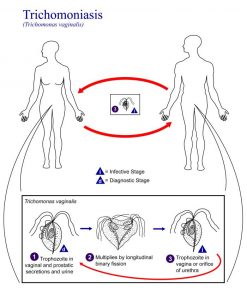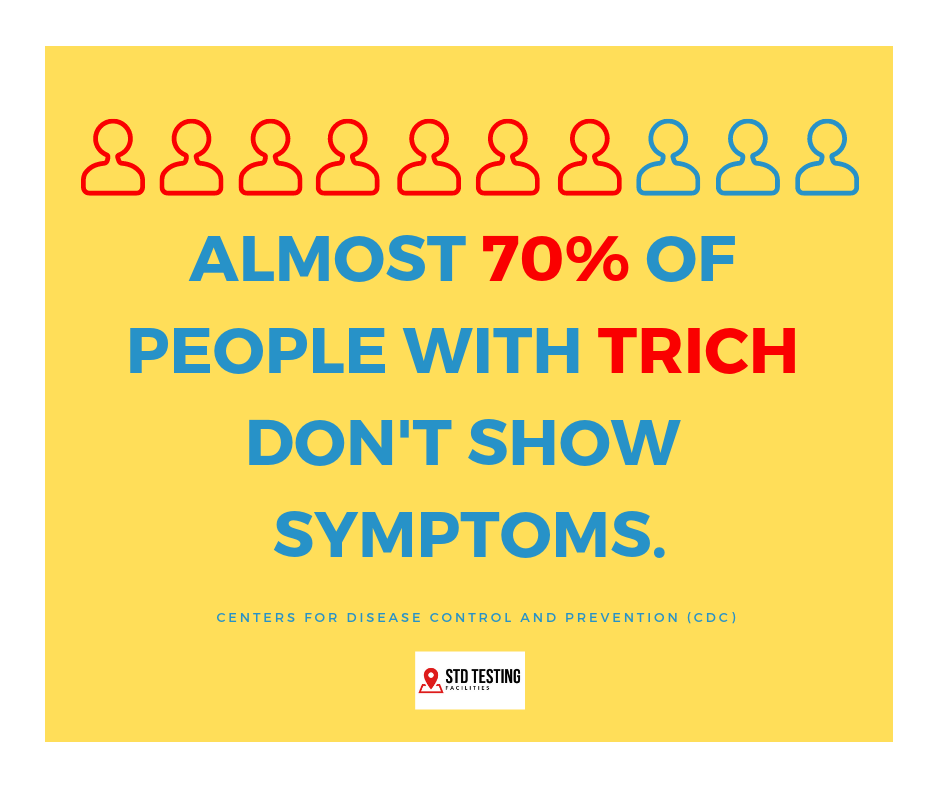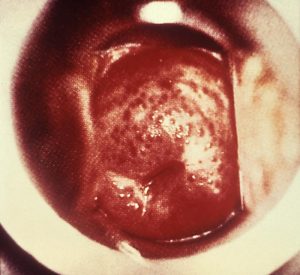Commonly called “trich” (pronounced like “trick”), trichomoniasis is a sexually transmitted disease (STD), also known as a sexually transmitted infection (STI). A lot of people may not have heard of this infection, but it is actually one of the most common STDs in the United States. According to the Centers for Disease Control and Prevention (CDC), more than 3.7 million people in this country alone have it. It is caused by the parasite Trichomonas vaginalis.
Who Is at Risk for Developing Trich?
Anyone who has had unprotected sexual contact or used a protective barrier incorrectly could be at risk for contracting trichomoniasis. Remember: sexual contact doesn’t just mean vaginal sex! Anal and oral sex can also transmit STDs like trich.
Can I reduce my risk of getting trich?
Some of the best methods for reducing the risk of getting an STD are:
- getting regularly tested,
- talking honestly to any and all sexual partners about their sexual history and health,
- using protection correctly every time, and
- staying with one partner in a mutually monogamous relationship, where both partners have tested negative for trich.
Know that hormonal birth control methods like the pill DO NOT protect against STDs like HIV.
It’s also important to know that even sex with proper condom usage can present STD risks. In other words, condoms may not always provide full protection. For example, if the infection is present outside the protective barrier of the condom, then the condom may not offer full protection. This can happen with several STDs, including trich. This does not mean that condoms are not important for reducing the risk of pregnancies and STDs, only that they may not always be 100% effective in doing so.
Go here for more information on how to have safer sex.
Is there a connection between trich and HIV?
HIV is the infection that causes AIDS. There are treatments available for HIV, but there is currently no cure or vaccine for HIV or AIDS. Research shows that some STDs, like trichomoniasis, can make it more likely to both get HIV and pass it on to a partner.
I have HIV already. Does this mean I should get tested for trich?
The CDC recommends that all women infected with HIV receive a screening for trich at least once a year.

What Are the Symptoms of Trichomoniasis?
Both men and women can become infected with this STD. It typically affects more women than men. Common symptoms include, but are not limited to:
- Pain or itching near the genitals
- Painful or uncomfortable urination
- Burning after ejaculation
- Discharge from the penis
- Changes in discharge from the vagina
When do symptoms of trich show up?
It varies by individual. Some people notice symptoms between 5 to 28 days. For some people, it can be longer. Others may not show symptoms at all.
I don’t notice any symptoms. This means I don’t have trich, right?
Wrong. Many people DO NOT show symptoms or notice any signs of trich. According to the CDC, almost 70% of people with trich don’t show signs of this infection. If people do not show symptoms, they are asymptomatic. You can still catch this STD from an asymptomatic partner. This also means that you can pass this STD on without noticing symptoms. That makes testing for this STD extremely important. The only way to know for sure whether or not you have it is through an accurate test; checking for symptoms alone is not an accurate indicator of sexual health.

What does trich look like?
The following image is one example of what a trich infection of the cervix can look like. The image is graphic and may be disturbing to some people. Do not attempt any diagnosis based on this image.

What Is Testing for Trich Like?
Remember: like many STDs, trich can develop without presenting symptoms. So, it is important to get tested. There are plenty of tests you can take to check for trich. A common one is to have samples collected via urethral or vaginal discharge, although testing via urine samples can occur, too. Pap smears can also show whether someone has this STD.
Where Can I Find Trichomoniasis Testing Near Me?
You can find STD testing near you here.
How Is Trich Treated?
Fortunately, trich is easily treatable. Most people can take a single dose of metronidazole. For others, trichomoniasis treatment can be a bit more complicated, and might involve more than one dose.
Centers for Disease Control and Prevention (2013). CDC Fact Sheet: Incidence, Prevalence, and Cost of Sexually Transmitted Infections in the United States. U.S. Department of Health and Human Services. Retrieved from https://www.cdc.gov/std/stats/sti-estimates-fact-sheet-feb-2013.pdf
CDC (Last reviewed 2017). Trichomoniasis – CDC Fact Sheet. U.S. Department of Health and Human Services. Retrieved from https://www.cdc.gov/std/trichomonas/stdfact-trichomoniasis.htm
The images shown on this page are for illustrative purposes only; they should not be used as diagnostic tools.
STDTestingFacilities does not suggest that the sources/authors of the images shown on this page endorse this site.
“Trichomoniasis Testing – Where Can I Get Tested?,” as well as this site and its resources, should not act as a substitute for medical information or advice provided by a licensed health-care professional.




